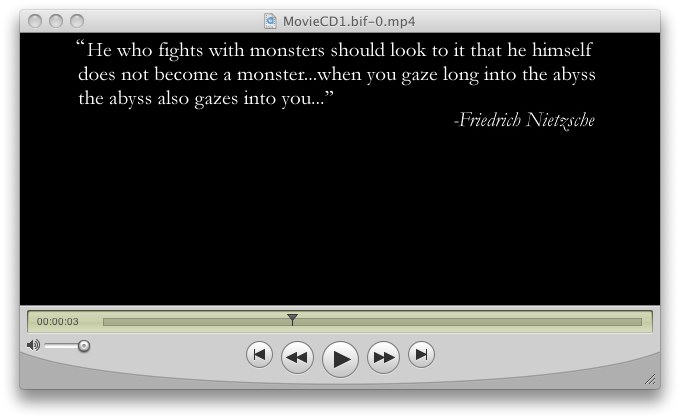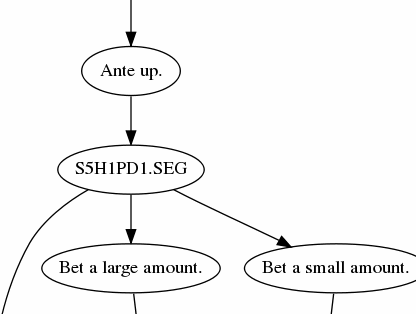I have been sitting on the results of this little experiment for a month now. I was in a bit more of a hurry during the qualification period for this year’s Summer of Code because I knew it would eventually yield a bumper crop of suitable qualification tasks. But that time has long passed.
The task at hand is to systematically survey the types of files that libsndfile can create, see what it can do that FFmpeg can’t, and make a plan to get those formats into FFmpeg starting with listing them as small tasks.
Libsndfile comes with several small example utilities (something can FFmpeg could probably use instead of, or to supplement, one big utility). One such program is sndfile-convert
I had to modify sndfile-convert since not all of the supported formats were enumerated in its case-switch statements. The result of the above command was 120 unique format/codec combinations. I have uploaded all 120 cow moo samples (taken from the OpenOffice media suite, handy on my Eee PC when I was running this experiment).
How many of these 120 files can FFmpeg decode? I compiled FFmpeg with GSM 6.10 support and used the following command to print out FFmpeg return code and filename for each sample:
for file in `ls`; do
ffmpeg -i $file -f wav - 1> /dev/null 2> /dev/null;
echo $? $file;
done
The count is: 26 supported, 94 unsupported. Time to get to work. You wouldn’t believe how many different ways there are to wrap raw PCM data with a basic file header for storage and transport.
Actually, closer inspection will reveal that FFmpeg is not necessarily ready to support all of these file formats since a number of them contain 24- or 32-bit integer PCM, or 32- or 64-bit floating point PCM; these are longstanding FFmpeg TODO items.
Libsndfile is actually the first program I have encountered that handles Apple Core Audio Format Files (CAF or CAFF). I haven’t even found an Apple program that creates these, at least not among the offerings bundled with Mac OS X 10.5. Now that I have created some CAFs, I see that Apple’s QuickTime Player plays them handily.
FFmpeg also doesn’t support multichannel (more-than-stereo) audio very robustly in its present incarnation. Yeah, that’s another item on the TODO list. Check out the complete specs for CAFF, however. I think if we made it a goal to support CAFF to its fullest (save perhaps for its pulse-width modulation provisions), FFmpeg’s audio handling would reign supreme at the end of the journey.
For the curious, these are the 26/120 files that FFmpeg can decode at this time:
Continue reading →


